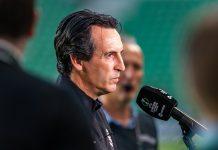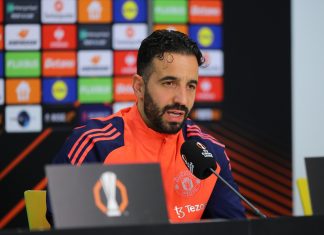Last year Mancini edged the FA Cup semi final between the two as City won 1-0, after he noticed that his team were being stretched by United’s width, which was leaving too much space between his players.
After squeezing higher up the pitch and encouraging his players to play closer together, they were able to close off the space United were thriving in and relish being in possession themselves. City after all, may have had the midfield advantage, but it was useless if their defenders were too far away from the midfield to pass the ball into their feet.
Last weekend Mancini got his tactics right from the start. United started, as they have been doing more and more in recent months, with a 4-4-2 of sorts. Wayne Rooney was playing off Danny Welbeck, with Ashley Young and Nani out wide. Anderson and Darren Fletcher in central midfield were totally overrun by the trio of Gareth Barry, James Milner and Yaya Toure.
The problem Ferguson appears to be grappling with is twofold; one, how to get the best out of Rooney? His best position probably is in the hole behind the striker, but this creates a secondary problem. How to play against teams like City with three strong central midfielders? Rooney may be a hard working player, but he is no midfielder. His position is more suited to someone like David Silva or Cesc Fabregas, players whose natural game is to link up with the midfield and create play. Rooney plays too far forward to fit this position; when he is forced back towards midfield, he is less effective.
And then there’s Javier Hernandez, who has been superb since signing for United. He has continued to score numerous goals, mostly from around the penalty area, but to enable him to do this most effectively he needs to start in a front two. Hernandez can play the lone striker role if necessary, but it isn’t his natural game, and he is best at taking advantage of empty spaces left by defenders trying to track the more skilful Rooney, Young and Nani.
So Man Utd really have this double problem. Rooney and Hernandez work as a pair, but how can you play both and have three in central midfield against teams like City and Barcelona; whom it is necessary against.
Last year United struggled to dominate possession against even relatively weak teams, which is surprising, but then perhaps less so considering that they were often playing with two central midfielders, not three. And with a defence as strong as theirs, they get away with it too, as they are able to win the ball back in the defensive third and counter attack with pace and precision.
The system has come unstuck to some extent this season as they have seen their defence weakened. Rio Ferdinand is increasingly unable to play on a regular basis, whilst Nemanja Vidic has been missing at crucial moments, such as against Manchester City. For a team whose formation invites other teams to take charge and try to attack them, this goes some way to explaining how United have become the team who have conceded the most chances in the Premier League this season. Whereas last year the defence was strong enough to absorb such pressure, this year they have not been.
For Ferguson, he is now faced with this dilemma. One solution could be to copy the Argentine system, and play a 4-3-1-2, with a playmaker ahead of three central midfielders. United would then be able to fit Rooney and Hernandez into the team in their best positions, and dominate the midfield against the likes of City. But it would come at a cost – the concession of the width of Nani and Ashley Young. Instead they’d be forced to use full backs who get forward much in the style of Dani Alves at Barcelona. Having spent so much on Nani, Young and also Antonio Valencia, this would seem unlikely. But it is a dilemma Ferguson must resolve soon. He has the players; but the formation is posing new and tricky dilemmas for the Scot.







